
先进仪器与器件(英文)(Advanced Devices & Instrumentation)(国际刊号)
- 高T3
- 主管单位:
- 主办单位:
北京航天控制仪器研究所、美国科学促进会
- 国际刊号:
: 2767-9713
- 国内刊号:
- 学科分类:
- 字数:
-
- 有无基金:
- 周期:
国际号刊-不明确
- 特殊属性:
外文期刊
- 电话:
- 邮箱:
adiscience@sina.com(官网邮箱)
- 复合因子:
0
- 综合因子:
0
- 收录:
- 级别:
高T3
期刊简介
《先进仪器与器件》期刊已被查看: 次
更新频次
单位占比
一作占比
投稿指南
1、该刊只有国际刊号。
2、投稿方式:在线投稿。
3、官网网址:
https://spj.sciencemag.org/journals/adi/
4、投稿系统:
https://www.editorialmanager.com/adi/default.aspx
5、官网邮箱:adiscience@sina.com
6、出刊日期:不确定期刊刊期。
7、微信公众号:先进仪器与器件
2021年9月30日星期四
《先进仪器与器件(英文)》期刊简介
(Advanced Devices & Instrumentation)
新成立的科学合作伙伴期刊 (SPJ)《先进设备与仪器》(ADI) 是北京航天控制仪器研究所 (BIACD) 和美国科学促进会(AAAS)合作创办的。期刊将提供一个特别关注集成和功能领域的高质量开放获取平台,为全球科学家和工程师提供服务,展示包括从设备到仪器等各研究阶段的重要学术突破和关键应用进展。
期刊旨在全方位推动电子学和光学(设备、系统和仪器层面)的重大科研突破以及应用进展,从而实现其功能集成。其内容主要涵盖了用于开发和制造先进设备和仪器的新理念、解决方法和最新的研究成果,以及现有程序有关的最新实用解决方案。
该期刊编委会由中国航天科技集团有限公司王巍和剑桥大学初大平两位主编领导,其成员均为电子学和光学专家,并在其领域做出过突出贡献的知名学者。
《先进仪器与器件(英文)》投稿须知
(Advanced Devices & Instrumentation)
【官网信息】
For Authors
To check on the status of your submission, please visit Advanced Devices & Instrumentation’s manuscript submission site.
For general guidance on using the manuscript submission system, please read the tutorials for Authors, Editors, and Reviewers. For questions on specific functionality, explore the Editorial Manager video library.
Categories of Manuscripts
The journal Advanced Devices & Instrumentation accepts submissions for original research articles, review articles, perspectives and editorials. Prior to submission, each author should review and be prepared to fulfill the submission requirements outlined in the Publication Ethics page and comply with following limitations.
Research articles should present a major advance and must include an abstract of up to 250 words, an introduction and sections with brief and informative subheadings. Authors may include up to ten figures and/or tables and about 60 references. Total research article length should be under 15,000 words. Supplementary materials should be limited to information that is not essential for the general understanding of the research presented in the main text and can include data sets, figures, tables, videos or audio files. Please see the submission requirements for research articles in the following section. For ease in preparing your submission, please follow the manuscript templates in Word and LaTex.
Review articles should describe and synthesize recent developments of interdisciplinary significance and highlight future directions. Reviews must include an abstract, an introduction that outlines the main theme, brief subheadings and an outline of important unresolved questions. Reviews should be no longer than 8,000 words, although longer manuscripts will be considered. Authors may include up to six figures and/or tables and up to 100 references. Most reviews are solicited by the editors. Unsolicited submissions will be considered, and authors are encouraged to contact the Editors first before writing a review paper.
Perspectives highlight recent exciting research, but do not primarily discuss the author’s own work. They may provide context for the findings within a field or explain potential interdisciplinary importance. Perspectives that comment on papers in Advanced Devices & Instrumentation should add a dimension to the research and not merely be a summary of the experiments described in the paper. As these are meant to express a personal viewpoint, with rare exceptions, Perspectives should have no more than two authors. Perspectives should include an abstract and have no more than 1,000 words and one figure or table.
Editorials are short, invited opinion pieces that discuss an issue of immediate importance to the research community. Editorials should have fewer than 1,000 words total, no abstract, a minimal number of references (no more than five) and no figures or tables. Editorials are only solicited by the editors.
Preparation of Manuscripts
English Language Editing Services
Interested in English language assistance prior to submission? The Science Partner Journals publishing team has evaluated the work of the companies listed on the SPJ Author Services page and found their services to be effective for editing scientific English language in manuscripts prior to submission.
Experimental Design and Statistics Guidelines
Study Design Guidelines
In the first section of the Materials and Methods, we encourage authors to have first subtitle of "Experimental and Technical Design," which includes a diagram or flowchart to show the entire experimental design and illustrates the most significant elements: materials, treatments, measurements, data collection, methods of data analysis. This will facilitate the editors, reviewers and readers to understand and follow the whole concept, design, and results.
Statistical Analysis Guidelines
Generally, authors should describe statistical methods with enough detail to enable a knowledgeable reader with access to the original data to verify the results.
Reporting Guidelines
Authors are encouraged to follow published standard reporting guidelines for the study discipline. Many of these guidelines can be found at the EQUATOR website.
Figure, Table, & Supplementary Material Guidelines
Creating Your Figures
It is best to create your figures as vector-based files such as those produced by Adobe Illustrator. Vector-based files will give us maximum flexibility for sizing your figures properly without losing resolution. These figure files can be saved at a lower resolution to minimize the file size at initial submission.
Although we do not need the highest-resolution files for the initial submission, you will need to have these high-resolution files of your figures on hand so that they can be submitted with your revised manuscript for final publication production. Each figure or image must be in a separate editable file format at revision. Images may be in TIFF, GIF, JPEG, PNG, BMP, PS, EPS, Word, Excel, PowerPoint, or PDF.
Figure Layout and Scaling
In laying out information in a figure, the objective is to maximize the space given to presentation of the data. Avoid wasted white space and clutter.
Please follow these guidelines for your figures:
The figure’s title should be at the beginning of the figure legend, not within the figure itself.
Include the figure’s identifying number (e.g., "Figure 1") on the same manuscript page that includes the figure.
Keys to symbols, if needed, should be kept as simple as possible. Details can be put into the figure legend.
Use solid symbols for plotting data if possible (unless data overlap or there are multiple symbols). For legibility when figures are reduced, symbol sizes should be a minimum of 6 points and line widths should be a minimum of 0.5 points.
Panels should be set close to each other and common axis labels should not be repeated.
Scales or axes should not extend beyond the range of the data plotted. All microscopic images should include scale bars, with their values shown either with the bar or in the figure legend. Do not use minor tick marks in scales or grid lines. Avoid using y-axis labels on the right that repeat those on the left.
Color-mix and Contrast Considerations
Avoid using red and green together. Color-blind individuals will not be able to read the figure.
Do not use colors that are close to each other in hue to identify different parts of a figure.
Avoid using grayscale.
Use white type and scale bars over darker areas of images.
……
更多详情:
https://spj.sciencemag.org/journals/adi/guidelines/
上一篇:地下水科学与工程(英文)(Journal of Groundwater Science and Engineering)(国际刊号)下一篇:麻醉与围术期科学(英文)(Anesthesiology and Perioperative Science)(国际刊号)
《先进仪器与器件》同类机械|仪表工业期刊
-
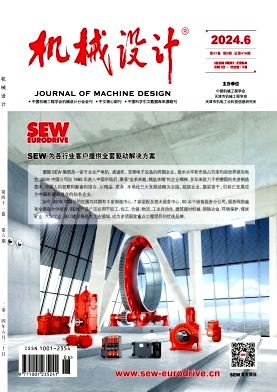
机械设计
北核,科核,CSCD扩,武A-,高T3
CN中文-月刊影响因子1.476
-
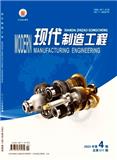
现代制造工程
北核,科核,CSCD扩,武A-
CN中文-月刊影响因子1.221
-
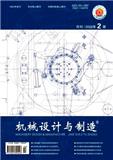
机械设计与制造
北核,科核,武A,高T3
CN中文-月刊影响因子1.059
-
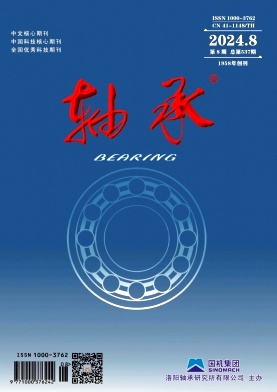
轴承
北核,科核,CACJ-核心,武B+
CN中文-月刊影响因子0.921
-
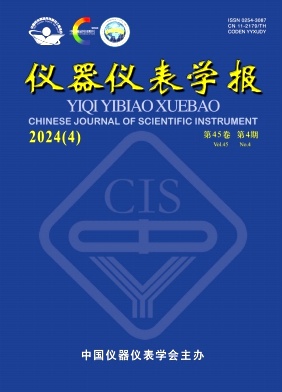
仪器仪表学报
北核,CSCD,科核,武A+,高T1,高T2,EI(中国2024)
CN中文-月刊影响因子3.693
-
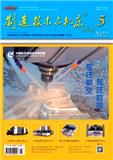
制造技术与机床(不收版面费审稿费)
北核,科核,高T3,CACJ-核心,武B+
CN中文-月刊影响因子0.899
-

中国机械工程(原:机械工程)
北核,CSCD,科核,武A+,高T2,高T3,EI(中国2024)
CN中文-月刊影响因子2.633
-
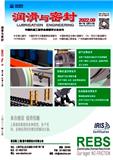
润滑与密封
北核,科核,CSCD扩,武A-,高T3
CN中文-月刊影响因子1.134
常见问题
-
先进仪器与器件杂志社官网、联系方式是什么?
先进仪器与器件杂志社官网:https://spj.sciencemag.org/journals/adi/
投稿网址:https://www.editorialmanager.com/adi/default.aspx
投稿邮箱:adiscience@sina.com(官网邮箱) -
先进仪器与器件杂志是核心期刊么?
先进仪器与器件不是核心期刊,级别是:高T3, 是:机械|仪表工业分类下的
-
请问你们是先进仪器与器件杂志社吗?
我们不是《先进仪器与器件》杂志社。本站主要从事期刊信息展示与期刊推荐,不是任何杂志官网,直投稿件请联系杂志社。本站仅提供免费的学术指导、论文辅导、期刊投稿信息整理收集服务。
-
你们指导服务后可以保证文章被发表吗?
期刊发表的成功与否,主要取决于文章内容的质量。编辑老师会根据研究领域、创新性等多因素进行考量。我们会帮助您理解期刊的发表要求,助力提升发表几率,从而增加发表的机会。
-
晋级论文能否在报纸上发表?
在学术界,论文的发表往往被视为研究者职业发展的重要一环。晋级论文,即为了获得更高职称或学术地位而撰写的学术论文,通常需在专业期刊上发表。然而,许多人可能会问
